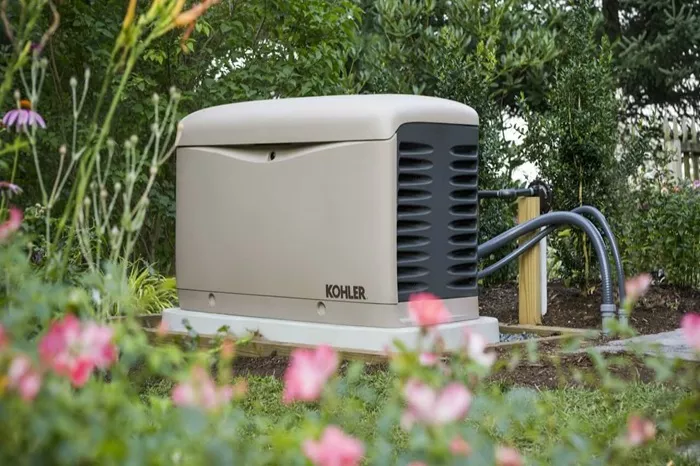A home standby generator is a backup power system that automatically supplies electricity to your house during a power outage. Unlike portable generators, which require manual setup, standby generators are permanently installed and turn on within seconds of a power failure. They ensure that essential appliances like refrigerators, heating systems, and medical equipment continue running without interruption.
In this article, we’ll explore how home standby generators work, their key components, installation requirements, and the benefits they offer. Whether you live in an area prone to storms or simply want uninterrupted power, understanding standby generators will help you make an informed decision.
How Does a Home Standby Generator Work?
A home standby generator operates using an automatic transfer switch (ATS) and a built-in controller that monitors your home’s electrical supply. Here’s a step-by-step breakdown of how it functions:
Power Failure Detection : When the generator detects a loss of grid power, its controller signals the system to start.
Automatic Startup : The generator’s engine ignites, typically powered by natural gas, propane, or diesel.
Voltage Stabilization : The generator produces electricity and ensures the voltage and frequency match your home’s requirements.
Automatic Transfer Switch Activation : The ATS disconnects your home from the utility grid and connects it to the generator.
Continuous Power Supply : The generator runs until utility power is restored, then shuts down automatically.
This seamless process ensures minimal disruption, making standby generators ideal for homes that need reliable backup power.
Key Components of a Home Standby Generator
Understanding the main parts of a standby generator helps in selecting the right model and maintaining it properly. Here are the essential components:
Engine
The engine is the core of the generator, usually powered by natural gas, propane, or diesel. Larger engines provide more power (measured in kilowatts, kW) and are designed for long runtimes.
Alternator
The alternator converts mechanical energy from the engine into electrical energy. High-quality alternators ensure stable voltage output, protecting sensitive electronics.
Automatic Transfer Switch (ATS)
The ATS is a critical safety device that switches power sources automatically. It prevents backfeeding (sending electricity back to the grid, which can endanger utility workers).
Controller Panel
The controller monitors power conditions, starts the generator during outages, and displays diagnostic information like runtime and maintenance alerts.
Fuel System
Standby generators connect to an existing fuel source (natural gas or propane) or have an on-site diesel tank. Proper fuel supply ensures continuous operation during extended outages.
Cooling & Exhaust System
Generators produce heat, so they require cooling systems (air or liquid-cooled) and proper ventilation to prevent overheating. The exhaust system directs harmful gases like carbon monoxide away from living spaces.
Battery & Starter
The battery provides the initial power to start the engine. Regular battery checks are necessary to ensure reliable operation.
Types of Home Standby Generators
Standby generators come in different sizes and fuel types. Choosing the right one depends on your power needs and fuel availability.
Air-Cooled vs. Liquid-Cooled Generators
Air-Cooled : Uses fans to cool the engine, suitable for smaller homes (up to 20 kW). More affordable but louder and less efficient for heavy loads.
Liquid-Cooled : Uses coolant (like a car engine), ideal for larger homes (22 kW and above). Quieter, more durable, and better for continuous use.
Fuel Types
Natural Gas : Connects to your home’s gas line, offering unlimited runtime. Requires a gas supply, which may be interrupted in disasters.
Propane : Stored in tanks, making it reliable even if gas lines fail. Requires refilling but burns cleaner than diesel.
Diesel : Highly efficient and long-lasting but requires fuel storage and regular maintenance.
Inverter vs. Conventional Generators
Most standby generators are conventional (non-inverter) because they provide high power output. Inverter generators are quieter and more fuel-efficient but are typically used in portable models.
How to Choose the Right Size Generator
Selecting the correct generator size ensures it can handle your home’s electrical load without overloading.
Calculate Your Power Needs
Essential Circuits Only (8–14 kW) : Powers lights, fridge, furnace, and a few outlets.
Whole-House Coverage (20–48 kW) : Runs HVAC systems, well pumps, and multiple appliances simultaneously.
Consider Future Needs
If you plan to add more appliances or expand your home, choose a slightly larger generator to accommodate growth.
Installation & Maintenance
Professional Installation Required
Standby generators must be installed by licensed electricians and gas technicians to ensure compliance with local codes. Key steps include:
Site Preparation : A concrete pad for stability.
Electrical Wiring : Connection to the main panel via ATS.
Fuel Line Setup : Proper gas or propane connections.
Exhaust & Ventilation : Safe dispersal of fumes.
Routine Maintenance
To keep your generator in top condition:
Weekly Test Runs : Let it run for 10–15 minutes to ensure functionality.
Oil & Filter Changes : Every 50–200 hours of operation (check manufacturer guidelines).
Battery Checks : Clean terminals and test voltage regularly.
Fuel System Inspection : Prevent clogs in gas or diesel systems.
Benefits of a Home Standby Generator
Automatic Operation : No manual intervention needed during outages.
Whole-House Power : Keeps all essential systems running.
Increased Home Value : A desirable feature for potential buyers.
Safety & Comfort : Prevents food spoilage, frozen pipes, and medical device failures.
Long-Term Reliability : Built to last 10–20 years with proper maintenance.
Conclusion
A home standby generator is a smart investment for homeowners who prioritize uninterrupted power. By understanding how they work, their components, and sizing requirements, you can choose the best model for your needs. Professional installation and regular maintenance ensure years of reliable service, keeping your home powered during emergencies.
If you’re considering a standby generator, consult with an electrician to assess your home’s power demands and explore the best options available. With the right system in place, you’ll never have to worry about blackouts again.

